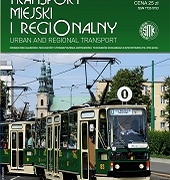Abstract 9/2020
Table of content
Andrzej Brzeziński, Magdalena Rezwow-Mosakowska – Draft of planning guidelines for bicycle infrastructure
Andrzej Brzeziński, Karolina Jesionkiewicz-Niedzińska – Draft of guidelines for bicycle infrastructure design
Agata Kurek, Paulina Świerk, Elżbieta Macioszek – Solutions to reduce congestion in cities as a factor that can improve road safety in built-up areas
Krzysztof Lingo, Piotr Smoczyński, Julian Kominowski, Mateusz Motyl – Identification of hazard sources occurring at tram stops in Poznań
Filip Ropiński, Joanna Wachnicka – Analysis of the use of rubber bollards at two-lane one-way roads to improve road safety
Abstracts
Andrzej Brzeziński, Magdalena Rezwow-Mosakowska
Draft of planning guidelines for bicycle infrastructure
Abstract. The process of planning the route system for bicycles aims to create a complete, coherent, safe and economically justifiable infrastructure for the bicycles. The role of planning is particularly important in the context of the implementation of transport policies and strategies based on the principle of sustainable mobility and in a context of ever-increasing interest in the use of bicycles. In the planning process, it is essential to take into account the requirements arising from the specificity of bicycle movement and the expectations of system users. Safety aspects are very important because cyclists are a group of vulnerable road users and thus do not have physical protection during a possible traffic incident. As part of the project [1] carried out on behalf of the Minister of Infrastructure, guidelines for the design of the infrastructure for cyclists have been prepared, including guidelines for the route planning (WR-D-42-1). The guidelines are intended to be an extension and complement to the provisions in force at the level of the regulation on technical and construction rules for public roads, including general and specific arrangements for infrastructure planning. It is assumed that they will be used for the implementation of strategic studies, conceptual projects related to the reconstruction or development of the road system, feasibility studies on transport infrastructure, programme concepts for transport infrastructure, and as a result will contribute to the order and harmonisation of the planning process of infrastructure devoted for cyclists.
Key words: planning standards, planning guidelines, traffic safety, planning of bicycle infrastructure, bicycle traffic
Andrzej Brzeziński, Karolina Jesionkiewicz-Niedzińska
Draft of guidelines for bicycle infrastructure design
Abstract. The increase of urban mobility combined with unrestricted access to car increases congestion of the road network. This cause an increase in time losses, mainly in peak hours, air pollution and the degradation of urban space. Following the idea of sustainable mobility requires change of the modal split and further increasing of the importance of the bicycle as a mean of transport for everyday travel. However, it requires the provision of adequate infrastructure, ensuring that cyclists can move smoothly, comfortably, and above all safely. The development of cycling demands investment not only in transport infrastructure and new routes, but also in the reconstruction and extension of roads and streets based on national design regulations. The article sets out the direction of the amendments proposed in the new rules on road design, from the point of view of infrastructure for bicycle traffic. This applies among others to: plan and profile of bicycle routes, bicycle traffic gauge, horizontal curves, visibility at road, tram and railway crossings, safe equipment of the infrastructure related to the bicycle traffic.
Key words: design standards, traffic safety, bicycle infrastructure design
Agata Kurek, Paulina Świerk, Elżbieta Macioszek
Solutions to reduce congestion in cities as a factor that can improve road safety in built-up areas
Abstract: An increase in vehicle traffic on urban roads may contribute to a lower level of road safety. In 2018, the highest number of road accidents in Poland occurred in built-up areas. Therefore, the purpose of the article is to present the possibility of using means of transport alternative to a passenger car in cities, which in turn may contribute to the reduction of traffic congestion in built-up areas and to the reduction of the number of road accidents. The various forms of transport for travels have been presented based on the literature review. Area inventory carried out allowed to present solutions to increasing road safety of people using public transport in Cracow. In addition, an analysis of the use of two examples of this solutions type was presented i.e. a parking Park and Ride (P+R) and bike-sharing stations in Cracow in 2018. An analysis of the bike-sharing system usage in Krakow allows to state that a large number of people have used the bike-sharing system in short trips. These journeys may be complementary to journeys made using public transport or as a continuation of journeys after leaving the car in parking P+R. In the case of the parking P+R in Krakow, drivers usually leave their vehicles for more than nine hours. This may indicate that the majority of people using these parking lots are commuters. Investments and development of this type of solutions can contribute to a reduction in the number of trips made by cars and thus reducing the number of road accidents in built-up areas.
Key words: road safety, public transport, P+R parking, urban bicycle system
Krzysztof Lingo, Piotr Smoczyński, Julian Kominowski, Mateusz Motyl
Identification of hazard sources occurring at tram stops in Poznań
Abstract. The article discusses the topic related to sources of danger occurring in the areas of tram stops. The study was conducted at Poznań tram stops classified by the municipal infrastructure manager in various categories. At all the stops, the behavior of passengers and other traffic participants have been observed, and the condition of the stop’s infrastructure and marking have been assessed. The collected observations enabled to develop a catalogue of sources of possible hazards occurring at tram stops which may cause dangerous accidents among passengers and users of the stop. be the reason for formulating hazards to passengers and/or other traffic participants. The catalogue is the basis for proposals for changes to be made to improve the level of safety.
Key words: tram transportation, tram stop, risk management
Filip Ropiński, Joanna Wachnicka
Analysis of the use of rubber bollards at two-lane one-way roads to improve road safety
Abstract: Pedestrian safety in Poland, despite many systemic activities, still remains a lot to be demanded and it is at an alarming poor level. In 2018, almost 24% of accidents occurred with pedestrians, and the share of fatalities in these accidents for many years has invariably been about 30% of pedestrians. In order to increase safety at crosswalks on 2 x 2 roads, the solution of using rubber bollards on the roadway before the crossing has recently been introduced. This article presents the results of a study on the behavior of pedestrians and drivers before and after the application of such a solution on one of the streets in Gdansk. Video recording together with digital and visual image analysis and surveys were used as a research method. The analysis shows that drivers have reduced their speed on the access road by 15%, however, there were still situations of overtaking of the vehicle, which stopped to let the pedestrian pass through by the other vehicle. The modernization performed discouraged pedestrians from crossing the road beyond the diagonal crossing, and young pedestrians in particular assessed the solution under study as improving pedestrian safety.
Key words: road traffic, road safety , pedestrian safety, rubber bollards at crossings

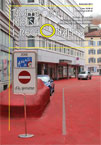 SITK RP
SITK RP 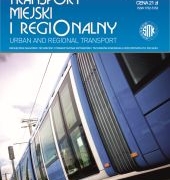 SITK RP
SITK RP 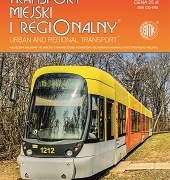
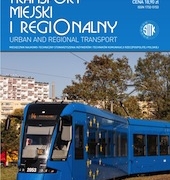 SITK RP
SITK RP 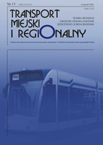 SITK RP
SITK RP 